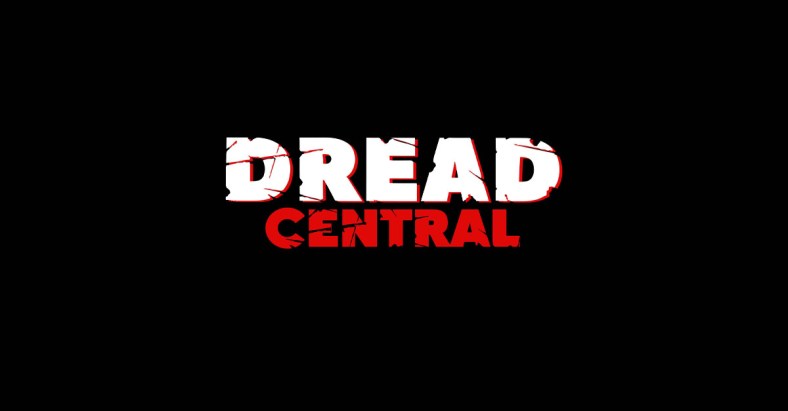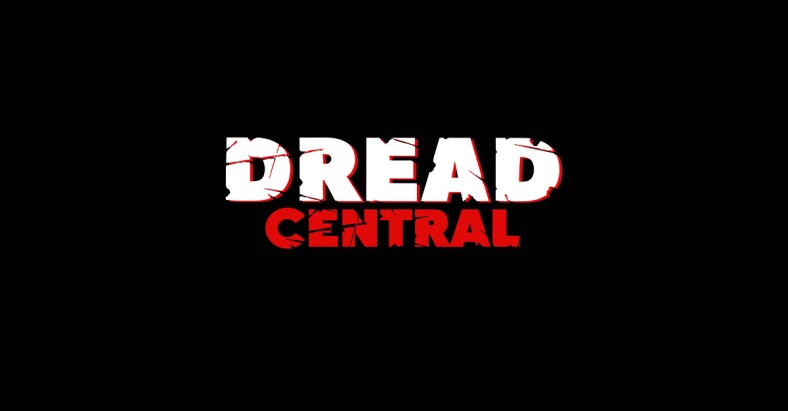Costume Designer Laura Montgomery on the Noir-Inspired Look of SPIRAL [Exclusive]

Do you want to play a game? When it comes to the Saw films, the answer should always be a hard “No!” Lionsgate’s latest Saw installment, Spiral: From the Book of Saw, is in theaters now. And while it’s the ninth film in the franchise, the feel of the film is a lot different from the others, exploring themes of social justice.
Related Article: SPIRAL: FROM THE BOOK OF SAW Review–Classic Horror Franchise Reimagined for a New Era
The story centers around Chris Rock’s character, Detective Zeke Banks, as he gets assigned a throwaway case that turns out to be something far more significant and grislier than anyone anticipated. A new Jigsaw-inspired copycat unleashes a new game of lethal justice, and this time their target is the police. Check out the trailer below.
It’s also worth noting that Rock serves as an Executive Producer too. Another new addition to the franchise is costume designer Laura Montgomery, who does a wonderful job of bringing a film noir-inspired vibe to the wardrobe–but with a contemporary twist. To get this look, she researched a lot of clothing styles from the 1940s and 50s and heavily relied on sketches for experimentation. Chris Rock also gave a lot of input on what he thought his character would be wearing. She talks about all this and much more in the below exclusive interview.

Dread Central: Spiral is your second time working with director Darren Bousman, so you must have a nice working relationship. How involved was Darren with your work on this film?
Laura Montgomery: I love working with Darren. He brings a lot of creative ideas to the table and at the same time, he gives his department heads the space to excel in our own areas of expertise. On set, his enthusiasm is infectious. In our early meetings, Darren laid out the broad strokes of his vision for a contemporary film noir set during a blistering summer heatwave. He wanted both of those ideas to be reflected in the costumes but left it up to me to figure out how. To achieve his vision, I used a controlled, mid-century color palette and LOTS of visible sweat stains.
Throughout the process of the film, Darren and I were in constant communication, discussing concepts, reviewing materials, and fitting photos. One costume that I fought for was the Uncle Sam in the movie’s opening scene. Darren was concerned that it would look too gimmicky. I told Darren that I had a vision for a “Tom Waits Uncle Sam” that would fit the gritty tone we were going for and I asked him not to make up his mind until he saw the costume. If he still didn’t like it, no problem. As you can see from the movie, my grungy Sam made the cut.
Related Article: Dress Up for a New “Dissecting Horror” with Costume Designers on May 25th

DC: If Darren isn’t the one giving you direction, who is telling you “Yes” or “No” on style decisions?
LM: One thing I love about filmmaking is that it is very collaborative. On every project, style decisions are influenced by the director, the actor, the production designer, members of my own team, and of course timelines and budget. As for who has the final say, that depends on the project. Network television can have many layers of approvals from the producers and studio reps, even lawyers when it comes to product licensing. On Spiral, if the actor was happy, Darren was happy, and I was happy, those were the yesses we needed.
DC: Darren wanted the wardrobe to look very film noir with clothing styles from the 1940s and ’50s. Did you go back and watch any specific films from this period to get inspiration?
LM: I love film noir movies and my ACD Kevin Barry turned me on to one I hadn’t seen before: Orson Welles’ A Touch of Evil. Set in a US-Mexican border town, it shares our theme of police corruption and helped get me into the right headspace for Spiral.
DC: Is there a specific look in Spiral that most encapsulates the film noir vibe for you? Or one that you think you really nailed?
LM: I really leaned into the film noir aesthetic with the characters of Detective Boz [played by Dan Petronijevic] and Detective O’Brien [played by Thomas Mitchell]. Spiral takes place mostly over the course of two script days which means that our leads don’t change their clothes very often. I knew that I wanted Zeke Banks (Chris Rock) and William Schenk (Max Minghella)’s costumes to be simple as they would be getting a lot of screen time and instead used the supporting characters to add more stylistic flourishes.
Also Read: Ranking Every SAW Movie Worst to Best (Including SPIRAL)
Spiral opens on Detective Boz running through a street carnival wearing a light pink blazer, linen shirt, and straw fedora. With his distinctive costume, I wanted to immediately signal to the audience that this was a different kind of Saw movie. Detective O’Brien’s closet includes three-piece suits, suspenders, and graphic grey and white striped shirts. Those were pieces that I thought would be too strong for our leads but that I definitely wanted to incorporate into their world.
DC: We heard that the only time red appears in a Spiral costume is in the lining of Jigsaw’s hood. Is that true?
LM: Yes, that is mostly true! The opening scene is set at a Fourth of July carnival, hence the Uncle Sam character, so there is some unavoidable red in the American Flag-themed t-shirts and bandanas. But other than that, I was careful to avoid red in the costumes. Blood is such a strong visual element, especially in the Saw movies, that when it appears on the screen I really wanted it to pop.
DC: We saw a picture of glass sticking out of Det. Zeke Banks’ (Chris Rock) shirt. This almost seems more like set dressing in a way. Did you have to do a lot of psychical placements of objects on the clothes for Spiral?
LM: Anything on costumes worn by an actor falls under the purview of the costume department. While it is up to our department to apply objects to the costume, there is much collaboration beforehand with other departments to figure out what the material will be and how it will interact with the costume. The Art Department, with the help of Special Effects, designed and built the amazing glass trap.
We consulted with them to figure out the spray radius of the glass, how big the pieces would be, what color the glass would be, etc. Special effects provides us with the rubber glass. There were also many conversations with Darren to determine what Chris’s action would be once he arrived at the trap as this would also dictate where the glass would hit him and embed in his clothing. In addition to glass shards, we added blood, dirt, vomit, urine, tar, and sweat to many of the other costumes.
DC: Did Samuel L. Jackson give you any input on what he thought his character should be wearing?
LM: During our first fitting, Sam asked for an accessory or costume piece that would relate to his character Marcus Bank’s background as a police chief. The paracord bracelet on his wrist is commonly worn by police and first responders. It comes in many colors and members of the police department wear the blue and black style. The bracelet can be used as a survival tool but it’s mostly a symbol of solidarity. I thought this would be a perfect subtle nod to Marcus’ tenure as police chief. If you don’t know what it means, it looks like a bracelet but for those who do understand the meaning, there is an added level of significance.
DC: The Saw films can be very physical, meaning the deaths can literally tear a person apart. From the Spiral trailer, we see someone get hit by a train and shredded for example. As these deaths are filmed, are you constantly making different versions of the costumes? How does that work, continuity-wise?
LM: Things can get complicated when we shoot out of sequence, which is frequently the case. On our first day, we shot a scene in which Zeke has already encountered a certain trap with black liquid, which we wouldn’t be shooting for weeks. In fact, that trap was not yet built. Throughout production, we had to make some educated predictions as to how the costumes would be affected by the traps. There was some blood applied on set but most of the costumes were pre-painted in our workroom and we crossed our fingers that what happened on set much later would match what we had already prepped.

The different stages of breakdown were decided well before we went to camera and it all came back to the script requirements. For Zeke Banks, we created six different stages of his main costume. The stages progress from slightly sweaty and rumpled to tarred, bloody, and torn. It takes careful planning to ensure that we have enough multiples. We had about 25 shirts for this costume and many of them had to be pre-bloodied. In some scenes, there is action that adds blood or breakdown to a costume piece that may already be bloody, cut with glass, etc. To give the director multiple takes, we have to have multiples of the stage just before the action. Stencils, photographs, and a very talented breakdown artist are a must!
DC: Any advice for people before they go see Spiral?
LM: Don’t go to see it alone! You will want to have a hand to hold or a shoulder to cower into during the movie. Afterward, you will definitely want to discuss the traps and twists with a friend or loved one.
You can learn more about Laura HERE.
Related Article: SPIRAL Stars Freak Out Watching Past SAW Traps in Our Exclusive New Featurette

Have you seen Spiral: From the Book of Saw yet? What do you think of our exclusive interview with costume designer Laura Montgomery? Let us know in the comments below or on Facebook, Twitter, or Instagram! You can also carry on the convo with me personally on Twitter @josh_millican.
Categorized:Interviews News



